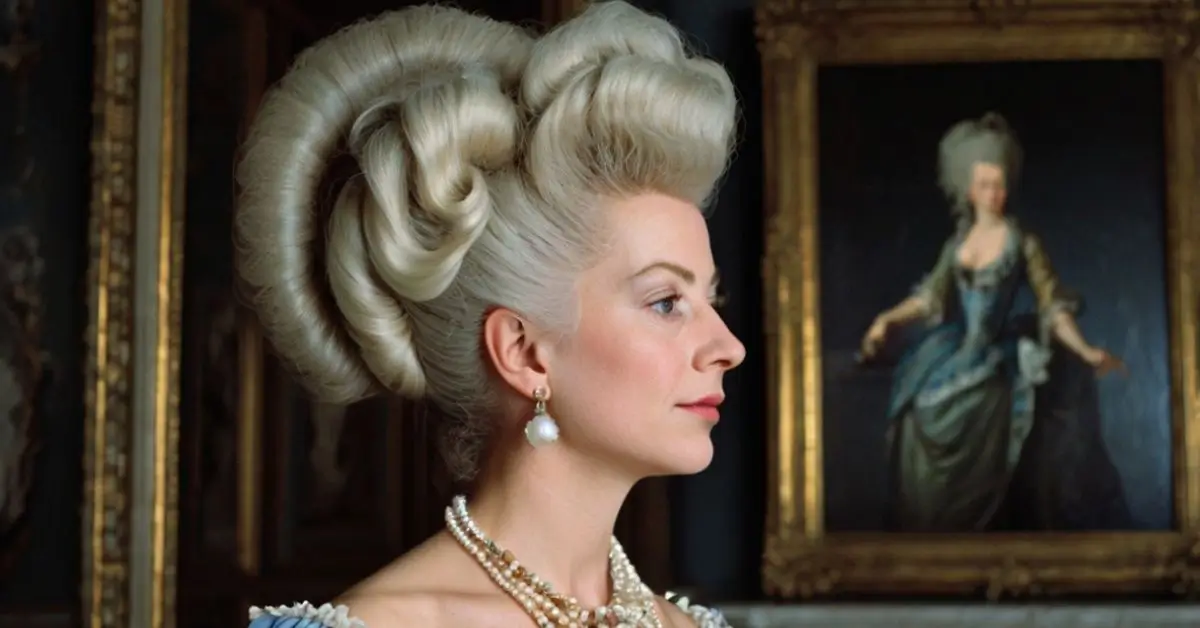Marie Antoinette hairstyles are synonymous with lavish fashion and historical elegance. As the Queen of France during one of Europe’s most politically volatile eras, Marie Antoinette was not only a symbol of royalty but also a pioneer of high fashion. Among her many extravagant style choices, her towering and elaborate hairstyles became iconic—representing royal excess, artistic expression, and a lifestyle that fascinated and scandalized the public.
This article dives deep into the phrase “Marie Antoinette hairstyles” by defining the key terms, exploring the historical era in which she lived, and analyzing how her unique coiffures influenced culture, politics, and fashion. By the end, you’ll understand how something as simple as hair became a powerful tool of social and political expression.
Understanding the Keywords: Marie Antoinette Hairstyles
Who Was Marie Antoinette?
Marie Antoinette (1755–1793) was born an Austrian archduchess and became Queen of France through her marriage to Louis XVI. Her life was marked by opulence, controversy, and ultimately tragedy. She was a symbol of aristocratic privilege during a time of increasing unrest in France, and her image—often adorned in luxurious fashion and elaborate hairstyles—became both admired and despised.
What Are “Marie Antoinette Hairstyles”?
Definition of the Term
The term “Marie Antoinette hairstyles” refers to the ornate and towering hairdos that became her trademark during the 1770s and 1780s. These styles were complex structures built with wireframes, padding, and real or artificial hair. Often adorned with feathers, ships, flowers, or even garden scenes, they were theatrical in every sense.
Significance
These hairstyles were not just about beauty—they symbolized class, influence, and innovation. They told stories, celebrated events, and made bold statements in a time where fashion was deeply connected to power and politics.
Historical Context: France in the 18th Century
The Enlightenment and Royal Rule
France in the 18th century was on the cusp of transformation. While Enlightenment thinkers encouraged ideas of liberty, equality, and reason, the monarchy clung to its absolutist traditions. Marie Antoinette found herself at the center of this conflict as both an influential figure and a target for criticism.
Versailles and the Royal Court
The Palace of Versailles was the heart of French royal life. For nobles, appearance was everything—status could rise or fall based on how one dressed. Hairstyles became part of this competitive visual display, and Marie Antoinette, as queen, was expected to set the trends.
Class and Fashion
In a rigid class society, what you wore (and how you styled your hair) reflected your position. Fashion was a language of status, and the more outrageous and elaborate your appearance, the higher your place in society seemed to be.
The Rise of the Pouf Hairstyle
The Introduction of the Pouf
The pouf hairstyle became a fashionable phenomenon in the early 1770s. It was first introduced by hairdresser Léonard Autié, who later became Marie Antoinette’s personal stylist. The pouf involved raising the hair a foot or more above the head using support materials like wires, horsehair pads, and pomade.
Common Features
- Height often exceeded 12 inches.
- Featured themes like ships (pouf à la Belle-Poule), gardens (pouf à la jardinière), or sentimental items (pouf sentimental).
- Often powdered white or gray for added effect.
Time and Effort Required
Creating these hairstyles was a laborious task that could take hours. They were so delicate that noblewomen often slept sitting up to avoid ruining their hair.
The Role of Accessories
Wigs were often enhanced with:
- Ostrich feathers
- Miniature ornaments
- Pearls and ribbons
- Wax figures and animals
These accessories turned hairstyles into works of art and conversation starters at court events.
Symbolism and Criticism of Her Hairstyles
Statement of Power and Authority
The queen’s hair became more than a fashion trend—it was a visual metaphor for her influence. The higher the hair, the more powerful she seemed. It also separated her from commoners, reinforcing her elite status.
Target of Political Satire
As public discontent grew, Marie Antoinette’s image became a lightning rod for criticism. Satirical drawings often exaggerated her hairstyles to mock her extravagance and ignorance of the common people’s suffering.
Early Feminist Interpretation
Historians have debated whether her fashion choices were a form of rebellion. In a male-dominated world, Marie Antoinette used style as a way to assert identity, autonomy, and even political influence.
Decline of the Hairstyling Craze
The Economic Crisis and Public Outrage
France’s financial crisis worsened in the late 1780s. The extravagant lifestyle of the monarchy, including hairstyles, was seen as offensive by a starving population. The queen’s image changed from glamorous to irresponsible.
Simpler Styles in Later Years
As criticism mounted, Marie Antoinette began to tone down her appearance. She wore simpler, rustic styles inspired by peasant fashion at her retreat in the Petit Trianon. Her hairstyles followed suit, becoming less exaggerated and more natural.
Fall of the Monarchy
With the outbreak of the French Revolution, Marie Antoinette was imprisoned and eventually executed. The towering hair and lavish attire that once symbolized her reign gave way to a tragic end. Her final public appearance was marked by modesty, far from the glamor she once embodied.
Legacy of Marie Antoinette Hairstyles
Influence on Modern Fashion
Fashion designers across centuries have drawn inspiration from her unique look. Designers like:
- Vivienne Westwood
- Alexander McQueen
- John Galliano
have reinterpreted Marie Antoinette’s hairstyles in their runway shows.
Pop Culture and Media
Films and Theater
The 2006 movie Marie Antoinette by Sofia Coppola visually revived the queen’s style, with bright, pastel-colored wigs and cotton-candy visuals. Theater productions and costume dramas often use her look to portray decadence.
Music and Celebrities
Pop stars like Madonna and Lady Gaga have styled themselves after Marie Antoinette, combining her iconic look with modern artistic rebellion.
Costume Trends
Today, her hairstyles are popular for Halloween costumes, cosplay, and historical reenactments. They have become a symbol not just of French history, but of timeless elegance and artistic fashion.
Conclusion
Marie Antoinette hairstyles were not simply a matter of personal vanity. They were artistic, political, and social statements that reflected the values and contradictions of 18th-century France. From towering poufs adorned with ships to natural peasant styles, her hair told the story of a queen caught between glamour and revolution.
Despite her tragic end, her legacy lives on—not only in the pages of history books but in the fibers of fashion, pop culture, and visual storytelling. Her hairstyles remain an enduring symbol of extravagance, femininity, and the fine line between admiration and satire.
FAQ’s:
1. Why were Marie Antoinette hairstyles so tall?
The towering styles symbolized royal status and power. The higher and more elaborate the hairstyle, the more prestigious the wearer appeared.
2. How were Marie Antoinette hairstyles maintained?
Her hairstyles were created and maintained by professional stylists using wireframes, pads, pomade, and wigs. They required hours to prepare and were often preserved for several days.
3. Were Marie Antoinette hairstyles created by herself?
No, her hairstylist Léonard Autié was responsible for designing most of her iconic hairstyles. However, she had significant influence in popularizing them.
4. What kinds of decorations were used in her hair?
Common decorations included feathers, pearls, fake birds, flowers, miniature ships, and even symbolic objects related to current events or sentiments.
5. Are Marie Antoinette hairstyles still popular today?
Yes, they continue to inspire fashion designers, costume creators, and artists. They are frequently seen in films, fashion shows, and themed events as symbols of luxury and historical glamor.












